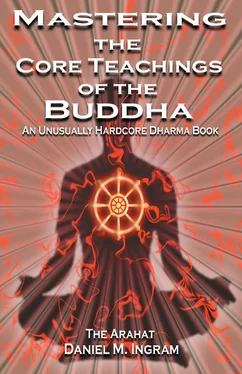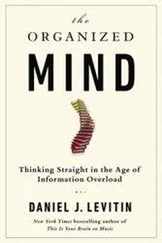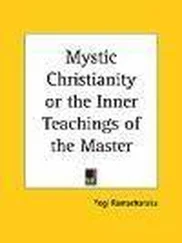Daniel Ingram - Mastering the Core Teachings of Buddha - An Unusually Hardcore Dharma Book
Здесь есть возможность читать онлайн «Daniel Ingram - Mastering the Core Teachings of Buddha - An Unusually Hardcore Dharma Book» весь текст электронной книги совершенно бесплатно (целиком полную версию без сокращений). В некоторых случаях можно слушать аудио, скачать через торрент в формате fb2 и присутствует краткое содержание. Год выпуска: 2009, ISBN: 2009, Издательство: Aeon Books, Жанр: Старинная литература, на русском языке. Описание произведения, (предисловие) а так же отзывы посетителей доступны на портале библиотеки ЛибКат.
- Название:Mastering the Core Teachings of Buddha - An Unusually Hardcore Dharma Book
- Автор:
- Издательство:Aeon Books
- Жанр:
- Год:2009
- ISBN:9781904658405
- Рейтинг книги:5 / 5. Голосов: 1
-
Избранное:Добавить в избранное
- Отзывы:
-
Ваша оценка:
- 100
- 1
- 2
- 3
- 4
- 5
Mastering the Core Teachings of Buddha - An Unusually Hardcore Dharma Book: краткое содержание, описание и аннотация
Предлагаем к чтению аннотацию, описание, краткое содержание или предисловие (зависит от того, что написал сам автор книги «Mastering the Core Teachings of Buddha - An Unusually Hardcore Dharma Book»). Если вы не нашли необходимую информацию о книге — напишите в комментариях, мы постараемся отыскать её.
Mastering the Core Teachings of Buddha - An Unusually Hardcore Dharma Book — читать онлайн бесплатно полную книгу (весь текст) целиком
Ниже представлен текст книги, разбитый по страницам. Система сохранения места последней прочитанной страницы, позволяет с удобством читать онлайн бесплатно книгу «Mastering the Core Teachings of Buddha - An Unusually Hardcore Dharma Book», без необходимости каждый раз заново искать на чём Вы остановились. Поставьте закладку, и сможете в любой момент перейти на страницу, на которой закончили чтение.
Интервал:
Закладка:
8
3.CONCENTRATION, THE SECOND TRAINING
On to concentration, the ability to steady the mind on whatever you wish and attain unusual and profound altered states of consciousness.
Training in concentration relates to formal meditation practice. It is also called training in “samadhi” (meaning depths of meditation), or sometimes “samatha practice.” Concentration practice involves working at a level that might be considered unusual, particularly contrasted with the ordinary level of training in morality. Training in morality is something to which everyone can relate. Training in concentration is only easy to relate to if you have attained to unusual states of consciousness or at least have faith that they can be attained.
Training in concentration has had thousands of pages dedicated to it, and there are probably thousands of concentration exercises. Some very commonly used objects of meditation are the breath (my personal favorite), one’s posture, a mantra or koan, a candle flame, various visualization exercises, and even the experience of concentration itself.
The object you choose should be one on which you would be happy to steady your mind.
The essential point about meditation is this: to get anywhere in meditation you need to be able to really steady the mind and be present.
That's just all there is to it and it is largely a question of just doing it.
There is an important shift that happens in people's practice when they really make the commitment to developing concentration and follow through with it. Until one does this, not much is likely to happen in one’s meditative practice! If you decide to do a concentration practice, stay on that object like a rabid dog until you have enough stability and skill to let the mind rest on it naturally.
The first formal goal when training in concentration is to attain something called “access concentration,” meaning the ability to stay consistently with your chosen object with relative ease to the general exclusion of distractions. This is the basic attainment that allows you to access the higher stages of concentration and also to begin the path of insight (the third training), so make attaining access concentration your first goal in your meditative practice. You will know when you have it.
So, the essential formal concentration practice instructions are: pick an object (the list above is a great place to begin), find a place to practice
Concentration, The Second TrainingMorality, The First and Last Training
where you are as free from distractions as possible, pick a sustainable posture (it doesn’t really matter so much), focus your attention on the object as completely and consistently as possible for the duration of that practice period, allowing as few lapses in concentration as possible, and learn to stabilize all of your attention on that object. The more you practice and the better your practice, the better you will become. Find the balance of effort and steadiness that works for you. Practice again and again until you can attain access concentration. While this paragraph may seem trite or sparse, it contains the formal instructions on how to begin training in concentration.
Should you need someone to tell you how long to practice, start with 10 minutes a day and work up to an hour or two each day as your life allows. If you can learn to hold your attention completely on your chosen object for even one solid minute, you have some strong concentration skills. That said, you might have 10 hours a day to devote to practice. Don’t let me hold you back! How long it will take you to develop access concentration is dependent upon a number of factors including practice conditions, your natural and cultivated concentration ability, the strength of your drive to succeed, and how much you practice.
Sharpening your concentration may help almost everything you do, and can provide a mental and emotional stability that can be very useful.
Concentration can also lead to some very nice states called “jhanas” and other names. These can be extremely blissful and peaceful. Being able to access these states of mind can be ridiculously enjoyable and can increase steadiness and stability of mind. These are of value in and of themselves and also serve the important function in the Buddhist tradition of providing a disposable foundation for insight practices, i.e.
the third training.
I will leave off describing the high concentration attainments until Part III so as to keep this section focused on the essential skills necessary for meditation, as once you gain access concentration getting into those states is very easy. Until you can get into access concentration, you ain’t got squat. Thus, pick an object, practice well and often, learn to attain to access concentration, finish reading this book, and by that point everything should be very straightforward.
10
Concentration, The Second TrainingMorality, The First and Last Training
Now, it must be said that concentration practices, like all practices, have their shadow sides. For instance, high and unusual experiences can become addictive and seductive, causing them to receive more attention and focus than they deserve. They can also lead to people becoming very otherworldly and ungrounded, very much the way that
hallucinogens can. They can also bring up lots of our psychological
“stuff.” This last limitation could be a benefit if we are in a mood to deal with this stuff. Perhaps the most important limitations of concentration practices is that they do not lead directly to the insights and permanent understandings that come from training in wisdom, as much as we might like them to. That brings us to the third training…
11
4.WISDOM, THE THIRD TRAINING
The third training in the list is wisdom, in this case a very special kind of wisdom that I will often call “ultimate” or “fundamental”
wisdom. This may also be rendered as “understanding” or “insight.”
The whole trick to this training is to understand the truth of the sensations that make up our present experience. The great mystics from all traditions have reported that there is something remarkable and even enlightening about our ordinary experiences if we take the time to look into them very carefully. Those that undertake training in wisdom have decided to do the experiment and see for themselves if this is true or if those old dead dudes were just making it all up.
Obviously, the first assumption that must be made is that there is some understanding that is completely beyond any ordinary
understanding, even beyond the altered states of consciousness that can be attained if we train in concentration. The next assumption is that there are specific practices that can lead to that understanding if we simply do them. The third and perhaps most vital assumption is that we can do them and be successful.
The assumption that is rarely stated explicitly but often implied is that we must be willing to stay on a sensate level, at the level of the actual sensations that make up experiences, if we wish to gain the insights that are promised by the mystics. The corollary of this assumption is that we must be willing to set aside periods of time during which we abandon the ordinary way of working in the world that is called training in morality and even the unusual way of working with altered states of consciousness that is called training in concentration.
We assume that the teachings on wisdom point to universal truths, truths that can be perceived in all types of experience without exception.
We assume that if we can simply know our sensate experience clearly enough, then we will come to understand for ourselves.
The primary agenda for doing insight practices is to increase our perceptual abilities so that the truths mentioned by the great mystics become obvious to us. Thus, rather than caring what we think, say or do, or caring about what altered state of consciousness we are in, when training in wisdom we actively work to simply increase the speed, precision, consistency and inclusiveness of our experience of all the
Читать дальшеИнтервал:
Закладка:
Похожие книги на «Mastering the Core Teachings of Buddha - An Unusually Hardcore Dharma Book»
Представляем Вашему вниманию похожие книги на «Mastering the Core Teachings of Buddha - An Unusually Hardcore Dharma Book» списком для выбора. Мы отобрали схожую по названию и смыслу литературу в надежде предоставить читателям больше вариантов отыскать новые, интересные, ещё непрочитанные произведения.
Обсуждение, отзывы о книге «Mastering the Core Teachings of Buddha - An Unusually Hardcore Dharma Book» и просто собственные мнения читателей. Оставьте ваши комментарии, напишите, что Вы думаете о произведении, его смысле или главных героях. Укажите что конкретно понравилось, а что нет, и почему Вы так считаете.












